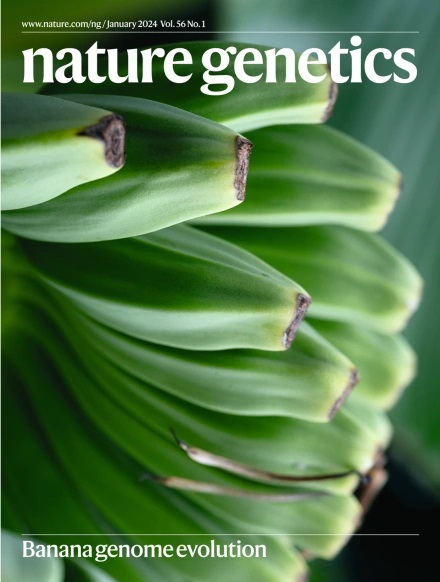一个结构化的聚结模型揭示了所有现代人类共有的深层祖先结构
IF 31.7
1区 生物学
Q1 GENETICS & HEREDITY
引用次数: 0
摘要
了解导致现代人类的混合事件和人口规模变化的历史是人类进化遗传学的核心。本文引入了一个基于聚并的隐马尔可夫模型眼镜蛇,该模型明确地表示了祖先种群的分裂和重新连接,并展示了其在多物种的模拟和真实数据上的应用。利用眼镜蛇,我们提供了所有现代人类历史上一段较长时期结构的证据,其中两个祖先种群在约150万年前分道扬镳,在约30万年前的一次混合事件中以约80:20%的比例融合在一起。在他们分化之后,我们发现在主要祖先群体中出现了一个强大的瓶颈。我们推断了来自每个祖先群体的现代基因组区域,发现来自少数群体的材料与编码序列的距离密切相关,这表明它对大多数背景有害。此外,我们发现大多数祖先的地区与人类尼安德特人或人类丹尼索瓦人的差异有很强的相关性,这表明大多数人口也是这些古人类的祖先。本文章由计算机程序翻译,如有差异,请以英文原文为准。


A structured coalescent model reveals deep ancestral structure shared by all modern humans
Understanding the history of admixture events and population size changes leading to modern humans is central to human evolutionary genetics. Here we introduce a coalescence-based hidden Markov model, cobraa, that explicitly represents an ancestral population split and rejoin, and demonstrate its application on simulated and real data across multiple species. Using cobraa, we present evidence for an extended period of structure in the history of all modern humans, in which two ancestral populations that diverged ~1.5 million years ago came together in an admixture event ~300 thousand years ago, in a ratio of ~80:20%. Immediately after their divergence, we detect a strong bottleneck in the major ancestral population. We inferred regions of the present-day genome derived from each ancestral population, finding that material from the minority correlates strongly with distance to coding sequence, suggesting it was deleterious against the majority background. Moreover, we found a strong correlation between regions of majority ancestry and human–Neanderthal or human–Denisovan divergence, suggesting the majority population was also ancestral to those archaic humans. The cobraa model extends the pairwise sequentially Markovian coalescent to identify structured population history by examination of the model transition matrix. Applied to human polymorphism data, cobraa identifies an ancient admixture event ancestral to all modern humans.
求助全文
通过发布文献求助,成功后即可免费获取论文全文。
去求助
来源期刊

Nature genetics
生物-遗传学
CiteScore
43.00
自引率
2.60%
发文量
241
审稿时长
3 months
期刊介绍:
Nature Genetics publishes the very highest quality research in genetics. It encompasses genetic and functional genomic studies on human and plant traits and on other model organisms. Current emphasis is on the genetic basis for common and complex diseases and on the functional mechanism, architecture and evolution of gene networks, studied by experimental perturbation.
Integrative genetic topics comprise, but are not limited to:
-Genes in the pathology of human disease
-Molecular analysis of simple and complex genetic traits
-Cancer genetics
-Agricultural genomics
-Developmental genetics
-Regulatory variation in gene expression
-Strategies and technologies for extracting function from genomic data
-Pharmacological genomics
-Genome evolution
 求助内容:
求助内容: 应助结果提醒方式:
应助结果提醒方式:


